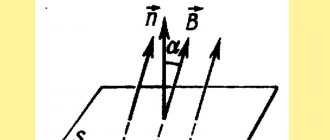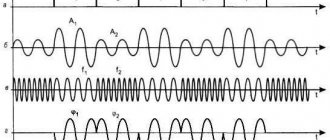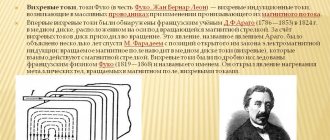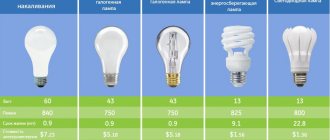It is known that an electric current flowing through a conductor generates a magnetic field around itself. Could the reverse process exist in nature? Can a magnetic field be used to create an electric current?
In the 19th century, physicists thought seriously about this. One of these scientists was the Englishman Michael Faraday (pictured above). It was he who told the whole world what induction is.
Conversion of mechanical work into energy and vice versa
Electromagnetic induction is a phenomenon on which almost all modern energy is based. It is known that mechanical work can be converted into heat. This is very easy to do, you just need to rub your palms together. This is how mechanical work turns into the internal energy of the palms. Is the reverse process possible? Is it possible to convert thermal energy (internal) into mechanical work? It is possible, and this is implemented, for example, in internal combustion engines.
So, in nature it is possible to carry out the process in one direction - to convert internal work into thermal energy. How can we do the opposite - convert internal energy into mechanical work (energy)? This discovery was made by Michael Faraday.
Faraday's thorny path to science
Michael's family lived in the suburbs of London and barely made ends meet. Food was so expensive that the boy was given one loaf of bread for a week; there was no other food. Faraday did not work for his father in the forge, nor did he help his mother as a maid. When he turned twelve, he got a job in a bookstore. First he worked as a messenger, and then as a bookbinder's assistant, and this is what decided Faraday's fate.
He had access to hundreds of books, but his greatest interest was in works on various branches of natural science. So Michael became interested in science, he read the Encyclopedia Britannica and other scientific publications. The boy, despite his modest income, repeated many of the experiments that were described there.
It seemed that it was impossible for a simple bookbinder to break into the scientific world, but chance intervened. Naturalists from the British Academy often came to the bookstore where Faraday worked. They saw that Michael was reading the Encyclopedia Britannica, noticed his interest and thirst for knowledge, so they invited him to attend a lecture by the world luminary of science, Humphry Davy.
Davy gave a course of popular lectures on physics and chemistry. The boy took notes on the lectures, beautifully bound the notes and handed them over to the scientist with a request that he take him to work with him.
Davy refused the young talent because there were no vacancies at that time, but luck smiled on Faraday once again. An explosion occurred in the laboratory where Humphry Davy worked, and glassware burst, damaging the physicist’s vision. For some time the scientist could not read or write. Fortunately, he remembered a boy who was interested in science and invited him to help him. After some time, Davy finally took Faraday to work with him.
How to use deductive and inductive approaches correctly
Using induction as the only method of searching for information does not provide an objective picture.
Inductive and deductive methods of reasoning have opposite ways of moving thought, but they do not contradict each other, but complement. Deductive reasoning requires a general statement, while inductive reasoning collects particular cases, bringing them under one theory. To get a result close to the truth, you must use both methods at once. This allows you to test each theory and weed out implausible ones. And from the remaining ones, by comparison, select one that will meet all the specified requirements.
It is assumed that Descartes himself and others in the scientific community who used the method of induction were actually using a combination of methods. Using one method increases the risk of formulating false conclusions. If the researcher cannot bring all subjects under a common factor, he will be tempted to discard inconsistencies and thereby distort the conditions of the experiment and get the wrong result.
Faraday's failed attempts to convert magnetism into electricity
Let us analyze the experiment that Faraday conducted to discover what induction is. He took a rather thick iron ring and wound several coils around it, which were insulated from each other. The physicist connected one coil to a galvanometer, and the other to a current source. Closing the circuit, Faraday noticed that the galvanometer needle was twitching. He checked the insulation and whether some of the current flowed into another coil. But it turned out that the insulation was fine everywhere.
What was even more surprising was that even when the circuit was opened, the galvanometer needle also twitched. Later, Faraday managed to figure out the reason for this phenomenon. To come to this understanding, he used not only coils with several windings, but also iron rods and magnets. The scientist wondered how magnetism could be converted into electricity.
Good old fly in the ointment
The highest quality assessment can be given by complete induction , which studies all available objects and phenomena.
She describes every property without missing a single detail, making the conclusions essentially like banal enumerations. It is extremely difficult to challenge them - to do this you will have to prove forgery or an error in the description.
However, today incomplete induction , since in the world of Big Data it is physically impossible to embrace all layers of knowledge.
Therefore, a control group is identified, observations of which form the basis of the theory. In this case, incomplete induction can be :
- popular;
- scientific.
The first simply tries to identify similar characteristics in the objects of study. The more coincidences, the more reliable the theory, although the first discrepancy will completely negate previous efforts.
Unlike popular induction, scientific induction , in which conclusions can be built thanks to three formats:
- Through case selection - when all the features of the set being studied (that is, each of the elements) are taken into account. Then any discrepancy with the hypothesis allows us to assign the object to another class and keep the basic theory unrejected. Otherwise, a new concept is derived.
- Through the study of causal relationships - when a specific set of circumstances that occurred before the observed phenomenon is studied. Simply put, the study of causes pays attention to the conditions that precede the phenomenon in question. This is the basis of experimental study. Specifying the circumstances not only makes the hypothesis more resistant to any criticism, but also clarifies the empirical experience.
- Through the study of a single object , which is the only representative of a certain group. In these cases, excluding the individual characteristics of the object of study, it is also possible to come to general conclusions. The risk of error remains, but with a limited number of samples there is no choice.
As you can see, knowledge obtained within the framework of inductive mechanisms is, as a rule, quite problematic, since it is only probabilistic. This factor causes the occurrence of numerous errors as a natural consequence of incomplete generalizations.
In light of this, most inductive judgments require repeated testing in practice, when the knowledge thus obtained is compared with the experience of the consequences arising as a result of inductive generalization.
Ampere's experiments
Ampere repeated the same experiments. True, the galvanometers that both scientists used were not the same as ours. These were very vibration-sensitive devices, so they were installed in a separate room. Ampere pushed the magnet into the coil and went into the next room. When he walked, he did not see what was happening with the galvanometer, how the device reacted. Then he inserted the magnet, returned to the room with the device, and the arrow pointed to the zero mark. Ampere went into the laboratory and pulled the magnet out of the coil. He returned to the galvanometer - the needle again pointed to zero, the physicist could not “catch” the induction of the conductor. Ampere was disappointed again and again.
What is the difference between deduction and induction?
Deduction in philosophy is a special way of thinking, using which a person draws logical conclusions based on general information and selects from it the most appropriate development of events for the situation. The use of the deductive method requires the ability to compose logical chains in which one phenomenon consistently follows from the second. This method of processing information became famous thanks to books about Sherlock Holmes, who used it to solve crimes.
The thinkers of the ancient period knew about deduction. Deduction has been used in philosophy to form conclusions based on existing knowledge. Each philosopher had his own idea of correct deduction. For example, Descartes called deduction an intuitive way of obtaining information, which, as a result of lengthy reflection, necessarily leads to the only correct version. Leibniz believed that deduction was the only way to achieve true knowledge.
Deduction is superior to most methods because it performs the following functions:
- helps to quickly find the right solution;
- used in areas of which knowledge is superficial;
- promotes the development of logical thinking;
- helps analyze hypotheses, assessing their plausibility;
- speeds up thinking.
The disadvantages of the deductive method include:
- the inability to apply the method to study new phenomena;
- some special cases are very difficult to bring to a common denominator;
- The knowledge obtained through deduction is more difficult to assimilate, since a person receives a ready-made answer without bothering to collect preliminary information.
The use of deduction in philosophy allows you to quickly and reliably verify information, provided that the laws of logic are used correctly.
Why did Faraday make the discovery?
Faraday had an assistant named Anderson. For forty years he assisted Faraday in the laboratory. They worked together: Anderson in one room watched the readings of the galvanometer, and Faraday in the other took a coil and inserted a magnet into it. While performing this action, Faraday heard Anderson's words through the open doors that the needle had deviated. When he took out the magnet, the assistant reported that the arrow deviated in the other direction.
Faraday then reversed the polarity of the magnet and inserted it into the coil with the other pole. Anderson said the galvanometer needle had moved in the same direction as the last time. Faraday later explained this phenomenon by a change in the induction vector. When the magnet was pulled out of the coil, the needle deviated in the same direction as the first time. Faraday and Anderson saw that the movement of a magnet in a coil generates an electric current in it.
Features of the inductive method
In science, there are two types of inductive method: complete induction and incomplete induction.
Full induction
With complete induction, all objects from the group are subjected to mental analysis in turn. They are identified with a given feature. If each object meets the stated condition, we can confidently assume that the objects have a common nature.
Incomplete induction
The main difference between incomplete induction is the inability to make a reliable inference. With incomplete induction, individual elements of objects are compared, and based on the result, an assumption is made. Incomplete induction allows us to draw only a particular conclusion, while complete induction tends to the general.
Conducting the experiment
To study induction, let's conduct an experiment with a permanent magnet. Let's connect the coil to the galvanometer. It is not necessary to insert a magnet inside, as Faraday did, you can insert an iron core into it. The needle does not deviate, but since the iron amplifies the field, the large magnet can be moved even far from the coil. The galvanometer needle will still deviate. This means that the movement of a magnet near or inside the coil generates an electric current in it.
Magnet replacement
Faraday decided to conduct an experiment with an electromagnet. To understand what induction is, we will repeat the scientist's test. Let's take a coil (letter A in the figure) on which a wire is wound. In order for it to create a field, we connect it to a current source and turn it on. We see that the current strength is about 1-1.5 amperes. Current flows through the coil, so it turns into an electromagnet. We insert and then remove the smaller coil from the larger one (letter B in the figure), and we see that the galvanometer needle (the device in the figure is indicated by the letter G) reacts.
The role of thinking methods in psychology
Deduction and induction are methods of thinking that need to be used in combination. The study of mental processes responsible for the development, interconnection and interaction of thought processes is one of the tasks of psychology. The form of manifestation of deduction and induction in psychology is called deductive thinking.
People who seek therapy use incomplete induction and arrive at erroneous conclusions. For example, a wife who cheated on her husband has red hair, which means all women with red hair are cheaters. Sometimes, the conclusions obtained as a result of deductive thinking are so divorced from reality that they pose a threat to the patient’s life. If a person decides that water is dangerous for him, he will completely refuse to use it. Without treatment he will die. Water is a source of stress for him, causing a panic reaction. A person cannot cope with such a burden on the psyche on his own, and at the moment of an emotional outburst he becomes dangerous to others.
This unconscious use of inductive reasoning is called fixation. The way to get rid of fixation will be correct deductive thinking, but its development, like any other method of therapy, should be under the supervision of a psychotherapist.
Psychologists recommend that people prone to nervousness develop deductive thinking. Simple methods are used for this:
- Solving logical problems. The classic method of deductive reasoning is mathematical reasoning. To solve a problem, a person uses logic, and this contributes to the development of the skill of distinguishing a false judgment from a plausible one.
- Expanding your horizons. In essence, this is replenishing the knowledge base with any information that is interesting to a particular person. You don't have to read textbooks for this. New information can be obtained by watching films or websites, communicating with other people, traveling.
- Development of accuracy. The ability to specify helps to select the correct criterion by which to evaluate phenomena.
- Flexibility of mind. A small amount of knowledge contributes to ossification of the mind. Having a limited set of typical situations, a person chooses not the most likely one, but the one that comes to mind first. And since he has little choice, she is unlikely to be suitable.
- Observation. This is a tool with which a person replenishes his internal treasury of personal experience. It is on its basis that conclusions are made.
Sometimes you can come across the term "psychological induction", but it does not have a specific definition. Often, induction refers to the manifestation of certain mental illnesses or an affective state.
Induction current
Faraday wondered what the reason was - in the movement itself or in the fact that when the magnet moves, the magnetic induction of a uniform field inside the coil changes. Maybe it’s not a matter of movement at all, but a change in the magnetic field? How can I check this? It is necessary to make sure that the field changes, but no movement occurs. To do this, you can increase or decrease the current.
A device for changing the current in a circuit is a rheostat. Let's connect it in series to an electromagnet. The current from the source will first flow through the rheostat, connect the second terminal of the device to the coil, and the second terminal of the latter to the current source. Now you can adjust the current strength. We insert an electromagnet - current flows, the galvanometer needle reacts. Is this due to the movement of the magnet or a change in the electromagnetic field? Let's check. Let's change the current. We will see that when it changes, the same happens with the magnetic field in the coil. As a result, a current appears in the second coil. It's called induction.
Induction from the position of philosophy
Looking back historically, the term “induction” was first mentioned by Socrates. Aristotle described examples of induction in philosophy in a more approximate terminological dictionary, but the question of incomplete induction remains open. After the persecution of Aristotelian syllogism, the inductive method began to be recognized as fruitful and the only possible one in natural science. Bacon is considered the father of induction as an independent special method, but he failed to separate induction from the deductive method, as his contemporaries demanded.
Induction was further developed by J. Mill, who considered the inductive theory from the perspective of four main methods: agreement, difference, residues and corresponding changes. It is not surprising that today the listed methods, when examined in detail, are deductive. The realization of the inconsistency of the theories of Bacon and Mill led scientists to study the probabilistic basis of induction.
However, even here there were some extremes: attempts were made to reduce induction to the theory of probability with all the ensuing consequences. Induction receives a vote of confidence through practical application in certain subject areas and thanks to the metric accuracy of the inductive basis.
An example of induction and deduction in philosophy can be considered the Law of Universal Gravitation. On the date of discovery of the law, Newton was able to verify it with an accuracy of 4 percent. And when checked more than two hundred years later, the correctness was confirmed with an accuracy of 0.0001 percent, although the verification was carried out by the same inductive generalizations. Modern philosophy pays more attention to deduction, which is dictated by the logical desire to derive new knowledge (or truths) from what is already known, without resorting to experience or intuition, but using “pure” reasoning. When referring to true premises in the deductive method, in all cases the output is a true statement.
This very important characteristic should not overshadow the value of the inductive method. Since induction, based on the achievements of experience, also becomes a means of processing it (including generalization and systematization).
What is induction
If you turn off the current source or turn it on, the galvanometer gives some readings for a short time. When Faraday noticed this, it became clear to him that it was changes in the magnetic field in the coil that created an electric current in it.
The phenomenon of electromagnetic field induction, discovered by Faraday, is that when the magnetic field changes in a closed circuit (in our case, a coil), an electric current arises in it.
Electromagnetic induction can also be observed in this case. Let's take a large magnet, bring it closer, and then remove it from the coil. In this case, an induction current arises. But you can do it differently. Simply rotate the coil in the magnetic field without moving it closer or further away. We will see that induction arises, the direction of which changes. This changes the number of magnetic field lines penetrating the coil.
Logical dualism
Another way to understand induction is to turn to the classics of world literature. The legendary character and very extraordinary personality Sherlock Holmes used the deductive method, collecting a general picture of the crime from many details and simultaneously sketching a portrait of the offender.
Thanks to deductive reasoning, the detective could figure out the profession of his interlocutor in a matter of moments, relying on such seemingly trifles as the presence of tattoos, scuffs on clothing and demeanor. These were the details common to some social groups.
But inductive judgments made it possible to guess - in particular, by the type of tobacco and the soil on the shoes - which places the suspect most often went to, because this was not observed in other parts of London.
Thus, Holmes operated with both types of reasoning depending on the situation - when some particular characteristics became general and vice versa. And although the conclusions may have turned out to be false, they still helped lead the investigation. This is the basis for the interconnection of logical tools and their unconditional usefulness when working in conjunction.
Empiricism allows you to find some individual facts. Induction helps to build assumptions and logical chains on this basis. Reflections form the basis of generalizations, and then a freshly made hypothesis through deduction becomes the key to solving problems in most particular cases, complementing and/or updating existing practical experience.
And the cycle repeats, replenishing the store of knowledge about the world. Is it then possible to consider knowledge obtained through inductive constructions to be the ultimate truth?











